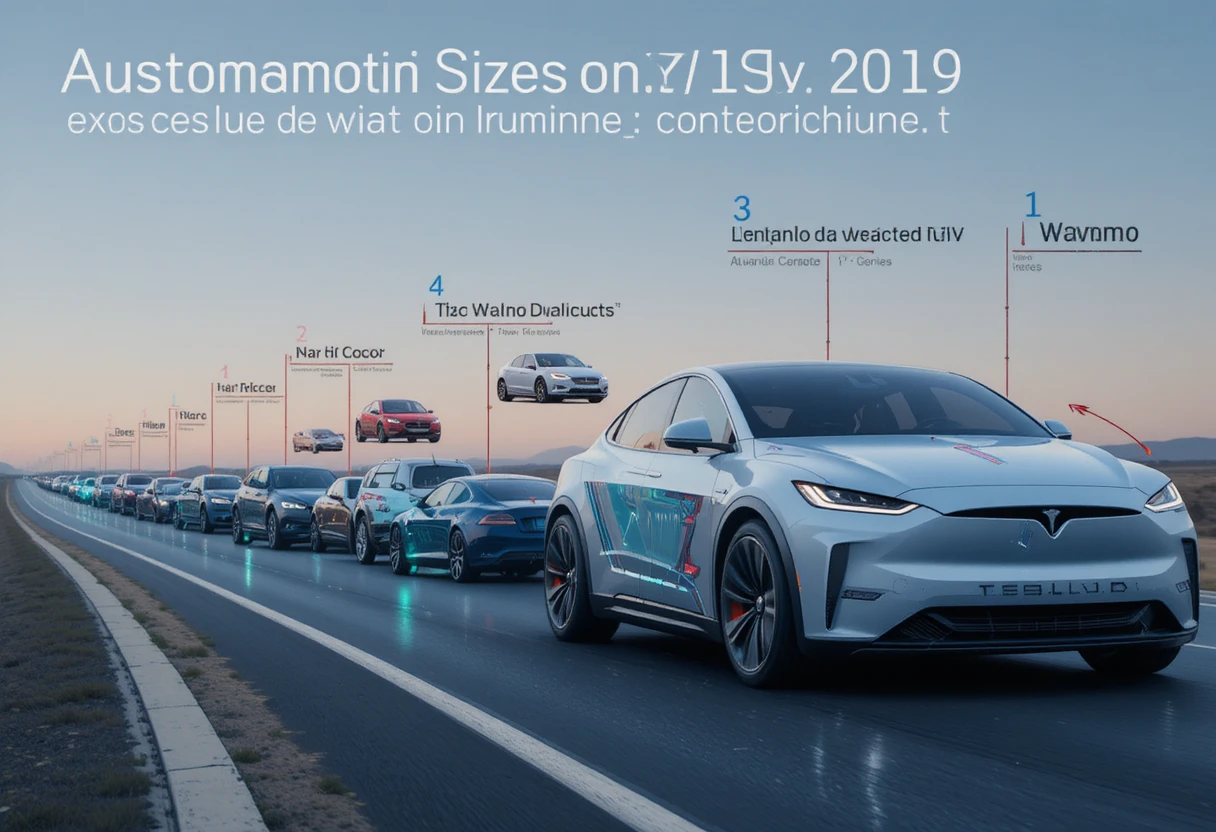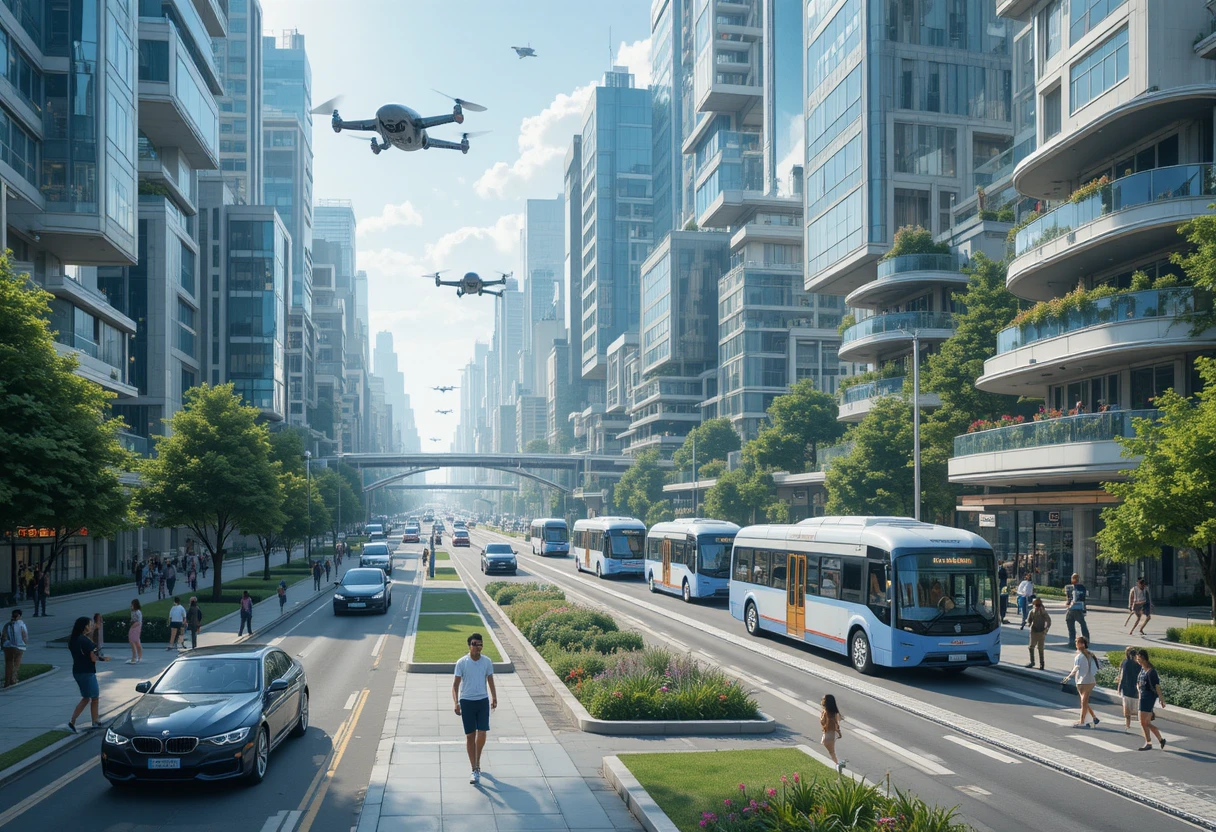Autonomous vehicles (AVs), also known as self-driving cars, represent one of the most transformative innovations in modern transportation. These vehicles use advanced sensors, artificial intelligence, and machine learning to navigate roads without human intervention, promising to reshape how we travel, work, and live. As of 2025, AVs are no longer a futuristic concept but a growing reality, with companies like Tesla, Waymo, and Cruise deploying fleets in cities worldwide. This post explores the history, technology, benefits, challenges, and future of AVs, highlighting their potential to reduce accidents, ease traffic congestion, and enhance mobility for all.
The History of Autonomous Vehicles
The roots of autonomous vehicles trace back further than many realize, blending human ingenuity with technological advancements over centuries. The concept of self-propelled vehicles dates to the Renaissance era, when Leonardo da Vinci sketched designs for a spring-powered cart that could move independently. However, practical developments began in the 20th century. In the 1920s, radio-controlled cars were demonstrated at events like the World’s Fair, showcasing early remote operation without drivers.
The modern era of AVs kicked off in the 1980s with pioneering projects from universities and automakers. Carnegie Mellon University’s Navlab project in 1984 created one of the first truly autonomous cars, using cameras and computers to navigate. Similarly, Mercedes-Benz and Bundeswehr University Munich’s Eureka Prometheus Project in 1987 developed vehicles capable of highway driving at speeds up to 100 km/h. These efforts laid the groundwork for sensor integration and AI decision-making.
The 2000s saw accelerated progress, driven by DARPA’s Grand Challenges in the U.S., which offered prizes for vehicles that could complete off-road courses autonomously. By 2007, teams had succeeded in urban environments, proving AVs could handle complex scenarios like traffic lights and pedestrians. Google’s self-driving car project, which evolved into Waymo, began in 2009, logging millions of miles on public roads. Tesla entered the scene in the 2010s with its Autopilot system, introducing over-the-air updates that continuously improve vehicle capabilities.
By the 2020s, commercialization took hold. Companies like Uber and Cruise tested ride-hailing services, while regulations evolved to accommodate AVs. In China, Baidu’s Apollo platform led deployments in multiple cities. This historical progression from conceptual sketches to real-world applications underscores the collaborative effort between academia, government, and industry to make AVs viable.
Milestones in AV Development
Key milestones include the 2018 launch of Waymo One, the first commercial robotaxi service, and Tesla’s Full Self-Driving (FSD) beta in 2020, which has since expanded globally. In 2025, AVs are advancing toward Level 4 autonomy, where vehicles operate without human oversight in specific areas, as defined by SAE International’s six levels of automation.

How Autonomous Vehicles Work: The Technology Behind the Wheel
At the heart of AVs is a sophisticated blend of hardware and software that enables perception, decision-making, and control. AVs rely on sensors like LiDAR (Light Detection and Ranging), radar, cameras, and ultrasonic sensors to create a 360-degree view of their surroundings. LiDAR, for instance, uses laser pulses to map objects in 3D, detecting everything from pedestrians to road signs with high precision.
Artificial intelligence processes this data in real-time. Machine learning algorithms, trained on vast datasets from millions of driving miles, predict behaviors and make decisions. For example, neural networks analyze traffic patterns to anticipate lane changes or sudden stops. GPS and high-definition maps provide contextual awareness, while vehicle-to-everything (V2X) communication allows AVs to interact with infrastructure, other vehicles, and even pedestrians’ devices.
Levels of Autonomy
SAE levels range from 0 (no automation) to 5 (full automation). Most current AVs operate at Level 2 or 3, requiring human supervision, but Level 4 systems like those in Waymo’s robotaxis function independently in geofenced areas. Achieving Level 5, where vehicles handle all conditions without restrictions, remains a goal for the 2030s.
Software and AI Integration
Software platforms like Tesla’s FSD use computer vision and end-to-end learning, where AI learns directly from data rather than rule-based programming. Challenges include handling edge cases, such as rare weather events or unpredictable human actions, which require ongoing data collection and simulation testing.
Current Developments in Autonomous Vehicles as of 2025
In 2025, the AV landscape is dynamic, with rapid deployments and regulatory shifts. Tesla’s FSD has been under federal investigation for traffic law violations, yet it continues to expand, turning heads with its potential to enable napping during commutes. Waymo, now part of Alphabet, has scaled its robotaxi service to more cities, reporting safer performance than human drivers in urban settings.
Conferences like Autonomous Vehicles USA 2025 highlight industry intelligence, while reports predict commercial availability in many areas by 2030. In Europe, McKinsey forecasts AVs addressing driver shortages, with an unmet need for 80,000 bus drivers by 2030. China leads in adoption, with Baidu and Pony.ai operating fleets in Beijing and Shanghai.
Regulatory changes are pivotal. The U.S. NHTSA is updating rules for self-driving cars, potentially easing deployment, though safety concerns persist. Trends include enhanced vision sensors for low-light conditions and partnerships like those with Waymo for high-speed sensors.
Key Players and Innovations
Startups and established firms are pushing boundaries. Trends for 2025 include AI integration for better prediction and V2X for smarter cities. Porsche’s new CEO, Michael Leiters, may influence AV strategies, while OwnAI Network explores AI-driven asset ownership akin to AV autonomy.

Benefits of Autonomous Vehicles
AVs offer profound advantages, starting with safety. Human error causes over 90% of accidents; AVs could reduce crashes by eliminating distractions, fatigue, and impairment. NHTSA estimates significant reductions in injuries and economic losses.
Mobility improves for the elderly, disabled, and those without licenses, providing independence. Environmentally, AVs optimize routes and speeds, cutting emissions—especially as electric models dominate.
Economic benefits include reduced congestion, freeing time for productivity, and lower costs through shared ownership models. By 2030, AVs could slash traffic jams and boost efficiency.
Societal Impacts
AVs promote inclusivity, reshaping urban planning with less need for parking, reclaiming space for green areas.
Challenges and Limitations of Autonomous Vehicles
Despite promise, AVs face hurdles. Ethical dilemmas, like decision-making in unavoidable accidents, raise questions. Cybersecurity risks, including hacking, are critical.
Regulatory fragmentation slows adoption, with varying laws across regions. Job displacement in driving sectors, like trucking, could affect millions. Technical challenges include adverse weather affecting sensors and liability issues in crashes.
Public trust is low due to incidents, requiring transparent testing.
Overcoming Barriers
Solutions involve robust standards, AI advancements, and public education.
The Impact of Autonomous Vehicles on Society and Economy
AVs will disrupt industries, from insurance—potentially reducing premiums—to logistics, enabling 24/7 operations. Urban design may evolve, with fewer cars owned personally, shifting to subscription models. However, increased sedentarism and pollution from more travel are risks.
Economically, the market could reach $80 billion by 2030, creating jobs in tech while displacing others.
The Future of Autonomous Vehicles
Looking ahead, AVs will dominate by 2030, with Level 2+ systems in most new cars. Full autonomy (Level 5) may arrive post-2030, integrating with smart cities. Innovations like foldable designs and AI economies are emerging.
Global adoption will vary, with Europe and Asia leading. Sustainability will drive electric AVs, reducing accidents by 80% by 2040.

Conclusion
Autonomous vehicles stand at the cusp of a transportation revolution, offering safer, more efficient mobility while posing ethical and societal challenges. As we navigate this transition in 2025 and beyond, balanced regulation, innovation, and public engagement will determine their success. Embracing AVs could lead to a world with fewer accidents, cleaner environments, and greater accessibility, fundamentally altering our daily lives.